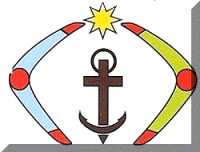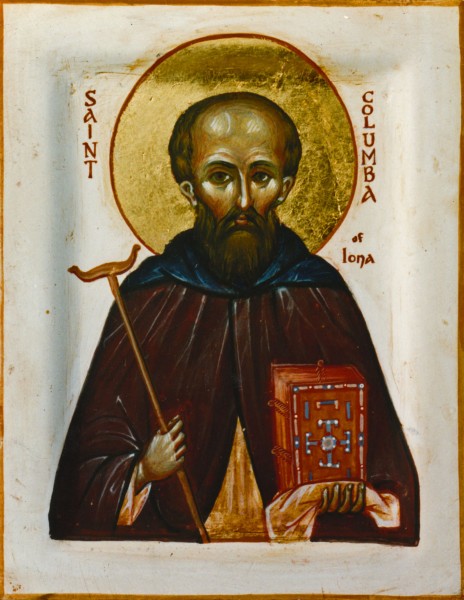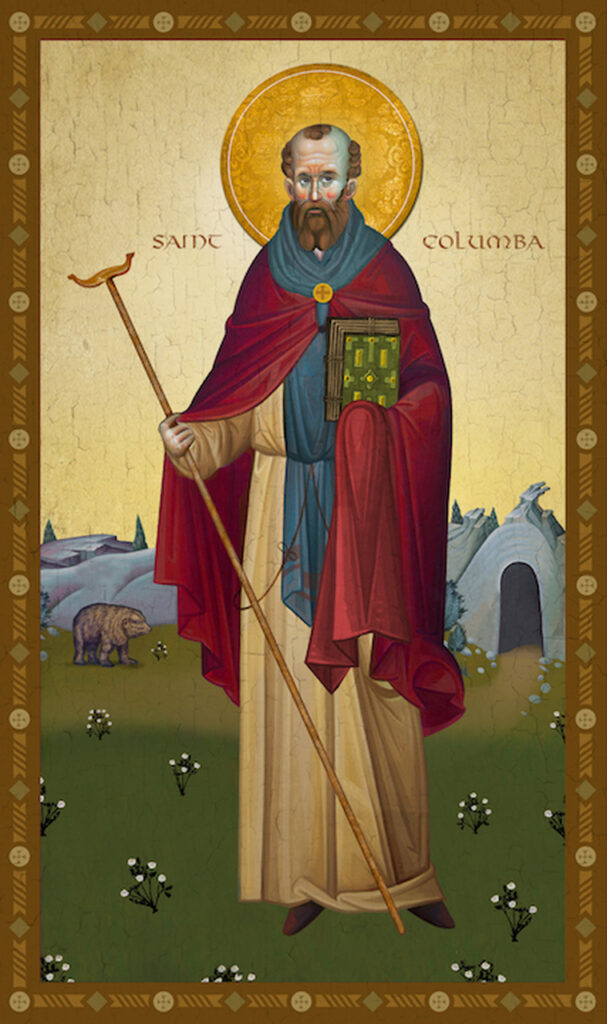
Because of their understanding that the Celtic Church was inline with Eastern Orthodoxy
How Did Orthodoxy Reach Ireland?
How did Orthodox Christianity reach this small green island off the coast of Europe’s westernmost continent? Many people are unaware that Christianity in Ireland has an Apostolic basis, thanks to the Apostles James and John, even though the Apostles never visited the country.
The Irish were the westernmost extension of a huge Celtic civilisation that spanned from southern Russia across Europe and eventually into the British Isles, and whose inhabitants were known as the Gauls. The names used to identify countries within Celtic/Gallic civilization’s complete range indicate its vastness: Galatia in Asia Minor, Gaul (France), Galicia (northwestern Spain), and the region of the Gaels (Ireland).
Celtic peoples, like Jews, maintained tight ties with their relatives throughout the Eurasian continent. When the Apostles first preached Christianity, those Celts who heard it and accepted it (seeing it as a culmination of the best parts of their ancient traditions and beliefs) instantly told their relatives, travelling by sea and land along routes their forefathers had taken since about 1000 B.C.
The sons of Zebedee, James and John, were the two Apostles whose teachings had the greatest impact on the Celtic peoples. James proclaimed the Gospel to the scattered Israelites in Sardinia after Pentecost (an island in the Mediterranean Sea off the east coast of Spain, which was used as a penal colony). From there, he sailed to the Spanish mainland and travelled along the Ebro River, where his message was joyfully received by the Celtic/Iberian peoples, particularly those in Galicia. For many centuries, this area served as a gateway to Ireland, particularly for the propagation of the Gospel.
The many peoples who lived there, especially the Celtic peoples known as the Galatians, accepted Christianity when John preached throughout Asia Minor (modern-day Turkey) (in Cappadocia). These people also communicated with their kinfolk all around the Greco/Roman globe, particularly in Gaul. By the middle of the second century, Celtic Christians in Gaul had requested a bishop, and the Church responded by sending St. Irenaeus, who settled in Gaul.Lyons on the Rhone river. The most important of St. Irenaeus’ many accomplishments was his mastery of the local Celtic people’s language and his preaching to them of the Christianity he had acquired from St. Polycarp, a disciple of St. John the Theologian.
By the fourth century, Christianity had reached all of the Celtic peoples, and this “leaven” was preparing people’s hearts for the second wave of Christian missionary endeavour to the Celts, led by St. Hilary and St. Martin.
St. Irenaeus’ seeds grew bountiful fruit in the person of St. Hilary of Poitiers, who, having lived in Asia Minor, would acts as a link between East and West, bringing Orthodoxy in its entirety to the Celtic peoples. He was a great lover of monasticism as well as a passionate defender of the Faith. St. Martin of Tours, Hilary’s student, was to become the spiritual forefather of the Irish people, and this Orthodox Faith and passion for monasticism was poured into him. Saints Hiliary and Martin were to the West what Saints Athanasius and Anthony the Great were to the East.
Read the remainder of this article here :(Paraphrased from The Catalog of good Deeds. 2007. A Brief History of the Irish Orthodox Church. [ONLINE] Available at: https://catalogueofstelisabethconvent.blogspot.com/2017/06/a-brief-history-of-irish-orthodox-church.html. [Accessed 11 October 2021].)
Who is Saint Columba, and what is his story?
Columba, an Irish monk, was one of the first missionaries to Scotland in the days before the Great Schism, when the Church in Britain was totally Orthodox. Columba was the founder of several churches and monasteries in Ireland, and he hailed from a noble Irish family. He settled himself on the island of Iona in 563 with three companions, where he formed a monastic establishment for the evangelising of Scotland. In 574, the new king of the Scots of Dal Riada came to Iona to be chrismated by Columba after converting Brude, the Pictish monarch. Iona was a hub for Scottish Christianity until the Reformation, when it was destroyed. As a result,Columba became one of the founders of ancient British Orthodoxy in this way. About St. Columba – St Columba Antiochian Orthodox Church – Lafayette Colorado (stcolumbachurch.org)
So it is that oftentimes when it is difficult to find information on the life of a Celtic Saint such information may be discovered on sites of the Orthodox church both Russian and Greek.
Whenever I have sought an image of St. Columba I have found Icons thereof, a certain indication of the respect Orthodoxy has for this and other Celtic Saints.

St Columba of Iona (white background) – Aidan Hart Sacred … 
Saint Columba of Iona | MYSTAGOGY RESOURCE CENTER 
The Venerable Columba, Abbot of Iona 
Modern Icon 
St. Columba of Iona ca. 521-597 — Classical Christianity 
Pro Ecclesia * Pro Familia * Pro Civitate:
